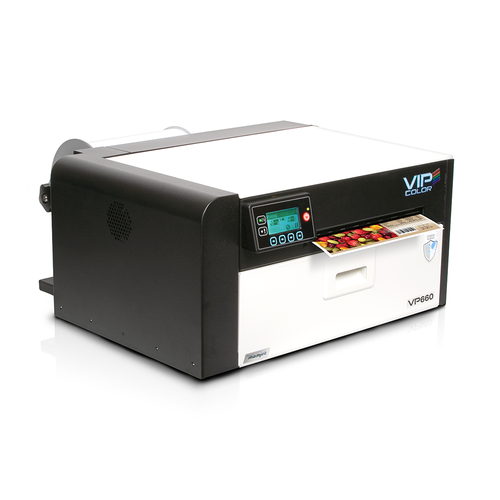Prime Label versus Secondary Labels
Prime Labels vs. Secondary Labels – What's the Difference?
On demand product label printing brings new terms to understand and choices to make. One of the most important choices involves selecting the right label printer for the task. For example, do you need to print prime labels or secondary labels?
What are Prime Labels?
Prime labels are featured prominently on the front of a product. They become an important part of the product and its branding. As such, prime labels are richly detailed with superior text and graphic design elements. They're typically printed in full color on high quality label stock.
Prime labels appear on the front of wine bottles, gourmet food jars, bags of coffee beans, and any number of products. They're designed to reinforce the brand, appeal to consumers, and entice consumers to buy. Because label stock and graphic design quality are vital in producing prime labels, manufacturers often use commercial printers or invest in high resolution, "on demand" color label printers such as Primera LX900, LX810, and LX400 printers.
What are Secondary Labels?
Secondary labels are also applied to products, typically on the carton or packaging. These labels usually serve a secondary purpose such as providing nutritional information on the back of a food product. Secondary labels are used in manufacturing and industrial environments as well. For example, secondary labels are used on inventory, supplies, equipment, samples, boxes, mailers, and other items. Manufacturers of items such as hardware, utensils, and supplies often label their carton boxes with secondary labels containing product details, barcodes, and black and white or grayscale graphics.
In many cases, especially in industrial applications, secondary labels are the only labels used. Grocery stores often apply secondary labels to food items created or packaged in-house such as on bakery items or meat from the butcher counter.
Think of the two label types in terms of form versus function. Prime labels serve as form and branding; they are highly visual. Secondary labels provide functional details such directions, sizing information, care instructions, nutritional information, part numbers, patient information, shipping addresses, and so on; they are highly functional. Due to their utilitarian nature, they may be printed in black ink only with limited graphical elements. Black thermal printers are often used for printing secondary labels because they are fast and inexpensive. Industrial label printers produce fast, low resolution labels that are durable and do not smudge and smear.
Despite their functional purpose, adding a splash of color or a company logo to a secondary label is often desirable. Manufacturers often use pre-printed color labels with low resolution black printers to create branded or colorful secondary labels with supplemental information and barcodes. Newer color printers for the secondary label market eliminate the need for using pre-printed label stock and quickly produce colorful secondary labels. For example, instead of boring black carton box labels, manufacturers can now create carton box labels with colorful pictures, logos, and branding as well as the traditional barcodes and product details. Color carton labels make the product easier to identify, more visually appealing, and more likely to capture consumer attention when sitting on product shelves.
The following two Epson's ColorWorks printers are recommended for industrial secondary label printing:
- Epson ColorWorks C3400 – The Epson ColorWorks C3400 is available as either a USB printer or a USB/Ethernet-based color label printer (Epson ColorWorks TM-3400). Depending on the model you select, it connects to a computer via a USB or Ethernet port. With the Ethernet version (TM-3400), anyone on the network can print to the label printer. In either case, the Epson ColorWorks C3400 printer is fast, durable, and perfectly suited for fast and easy label printing in a factory or manufacturing facility.
- Epson ColorWorks C3400-LT – This is an all-in-one unit containing the printer, a touchscreen, and integrated computer. The Epson ColorWorks C3400-LT is a standalone label printing kiosk capable of printing color labels on demand in a factory or manufacturing facility. It stores label designs by product, it takes minimal space, and it does not require a computer. Simply choose the desired product label on the LCD touchscreen and quickly print labels on demand.
Understanding the differences between prime and secondary labels allows you choose the right type of printer. If you need to print stunning prime labels on demand, the Primera LX900 color label printer is an excellent choice capable of printing brilliant four-color labels in resolutions of up to 4800 dpi. On the other hand, if you need to print secondary labels quickly and affordably, one of the new Epson ColorWorks printers will do the job beautifully.












